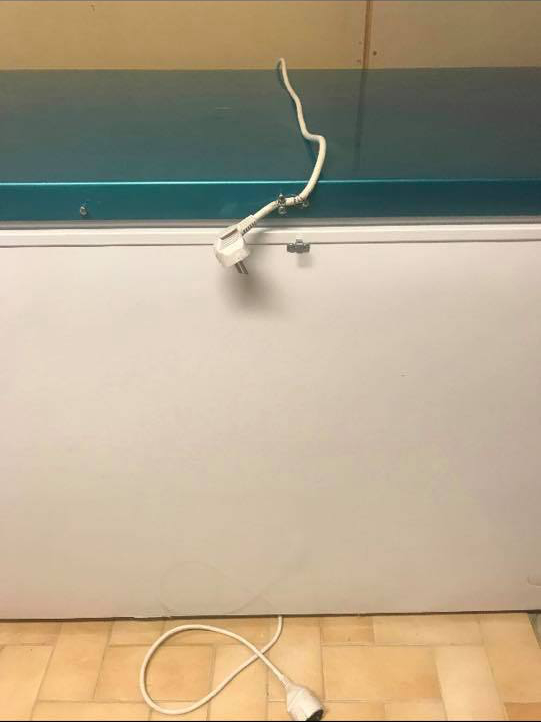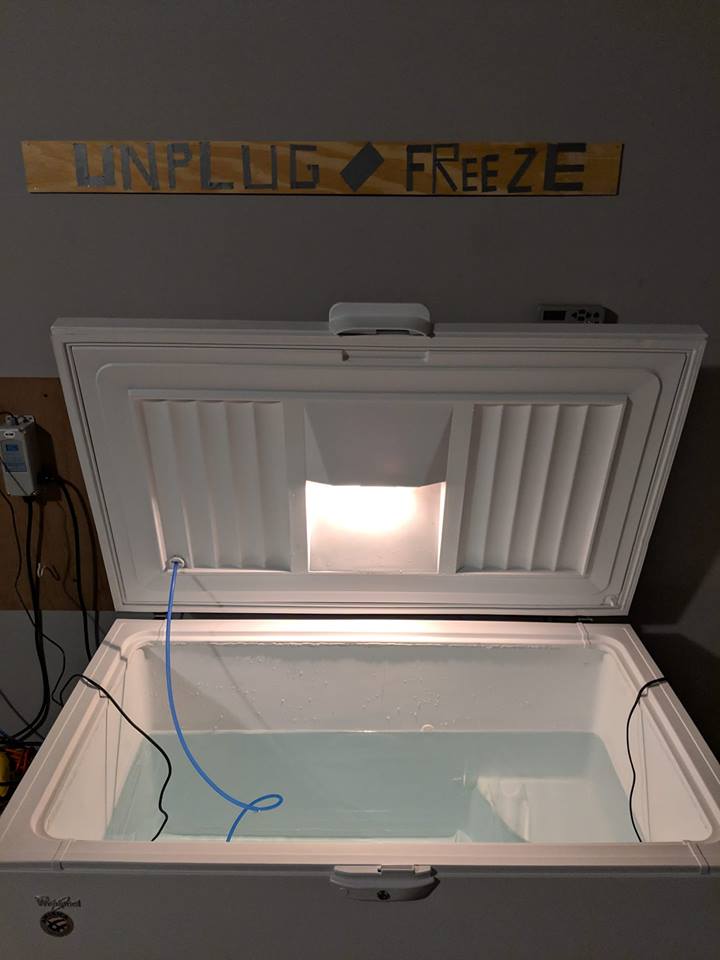Do You need to Unplug Your Chest Freezer Cold Plunge Before Getting In?

TLDR: The simple answer is yes. And not just your chest freezer but all other equipment you might have connected, including the temperature controller, ozone generator, UV lamp, and pump.
Why? Because there is a risk of electrical shock, possibly one strong enough to kill you.
A standard chest freezer is a major electrical appliance, never intended to hold water.
Most people practice some form of deliberate cold water immersion (ex., as part of the Wim Hof Method) to improve their mental or physical health, increase their recovery, or improve their athletic performance. If you are doing something to benefit your life, why would you be willing to risk everything by not taking a few seconds to unplug your equipment?
What about switches?
People have asked about using a switch or power strip and turning it off. This does not keep it safe. Switches can (and do) fail. Are you willing to trust your life with a part that costs a few cents and is most likely made by an over-worked under-paid employee in a factory in a foreign country?
What about a GFCI (Ground Fault Circuit Interrupt)? There are several versions of protective switches, known by many names around the world (RCD, MCB, MCCB, RCCB, RCBO, etc.) While there are some differences in how they work, all of them can and do fail and should be regularly tested and replaced.
When researching my book, I read through many fish aquarium forums and found enough posts about failed pumps to take caution. Fish get electrocuted. Fish owners have been shocked.
I have talked with more than a dozen licensed electricians and linemen since 2017 (Fun fact: In Australia, electricians are called Sparkys). Every single one of them (that’s 100%) has the same message:
Isolation (unplugging) is the only way to ensure your safety.
Your life is worth it.
You can use surge protectors, GFCIs, switches… just UNPLUG them all before entering the water.

I’m still dismayed when people say they like to live dangerously or on the edge. I’ll be very blunt – not unplugging your chest freezer is not living on the edge, it’s foolish. Do you have people in your life who care for you and rely on you? Maybe children, parents, a spouse, lover, or friends?
If so, and if you won’t unplug everything for yourself, unplug it for them.
I have all my chest freezer cold plunge equipment plugged into a power strip and then into a GFCI. Before I get in, I unplug ONE cord from the power outlet. Easy.
Do whatever you need to remember this basic step. I make it part of my mindfulness routine before I get in. Others have posted signs. Some drape the cord over the top of the lid.

Dry Off Before Plugging In
After you get out of the water, dry yourself off completely before you plug your equipment back into the power. Also, ensure you are not standing on any water on the floor before you plug everything back in.
What about GFCI?
We have countless posts in my Facebook group from licensed electricians, linemen, engineers, etc., who all say the same thing: unplug it! Here is one recent post (lightly edited):
“I’m sorry. There are plenty of posts on this already in this group you can search. The same question is raised with the same lack of research.
GFCI stands for GROUND fault circuit interrupter. If there is no electricity to the ground, the outlet will NOT trip. The outlet is meant to protect conditions for house fires, not for electrifying water. Electricity can flow through neutrals without interruption. That’s all of your 2 pronged equipment.
That would normally happen when a piece of equipment starts to fail. No one regularly disassembles their pumps or other equipment to check for damaged or worn connections. So the only 100% safe route is unplugging. Anything else is a risk. Frankly, if unplugging is too much of a hassle, chances are you didn’t research how to get out of a tub of electrified water either. There are videos readily available on YouTube explaining this.
There is a basic misunderstanding of what a GFCI does. There are 3 holes. The bottom is your ground. If the circuit path goes to that 3rd prong hole, the GFCI trips. If you plug in a 2-prong extension cord into a GFCI outlet and place the end into a glass of water, The GFCI won’t trip because there is no 3rd prong. If you plug in a 3-prong extension cord and place the end underwater, it still will not trip the GFCI until enough salt is added to make the water more conductive. Remember that if you are in the water, you would be shocked the entire time it takes before that GFCI trips. Is it really worth the risk just to not unplug one plug?”
Here is the video referenced:
TLDW: GFCI may not save you from electrical shock.
Note From an Electrician
I wish I had saved all of the quotes from over the years from electricians about this topic. Here is a recent one (lightly edited):
“Don’t be silly and trust your life to some cheap GFCI. I’m an IBEW Union electrician, and I’ve seen plenty of GFI’s fail; not worth it, just unplug it. Spas are a totally different animal, fiberglass bowls with all of the electrical opponents grounded. A chest freezer is literally a metal box full of water.” Nick S.
Stay safe – and happy cold plunging!
